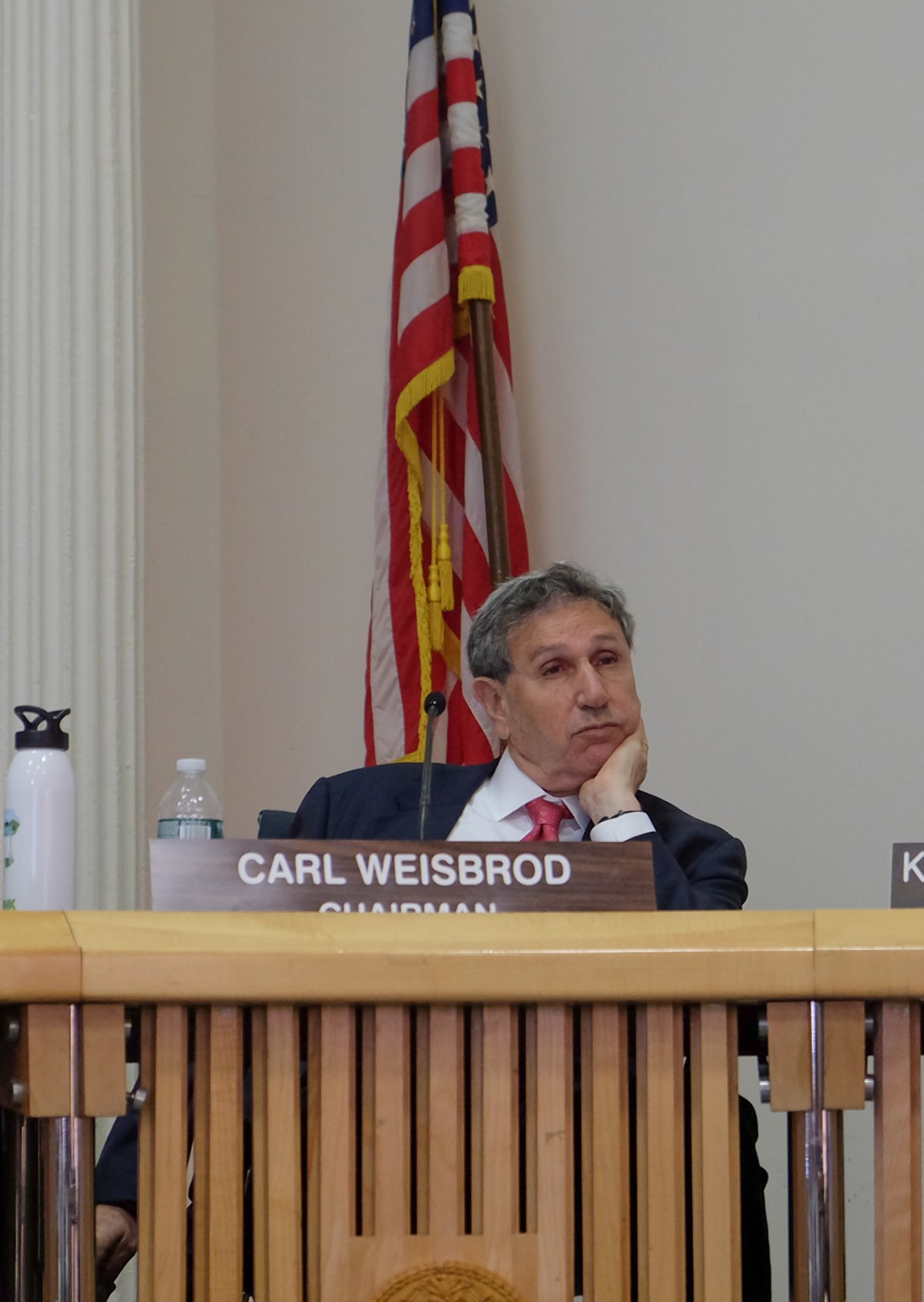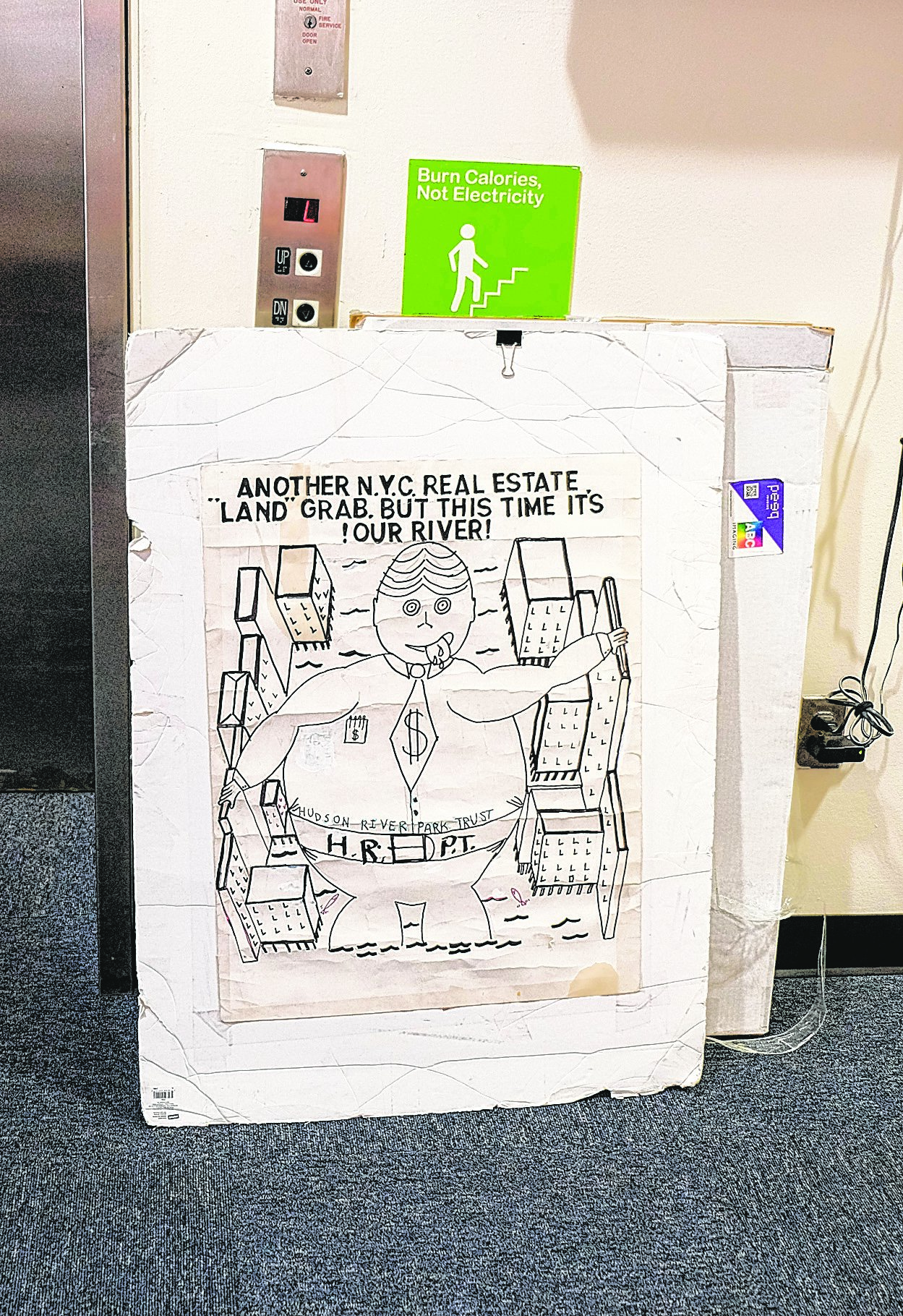
BY LINCOLN ANDERSON | Updated Wed., Sept. 21, 10 p.m.: The majority owner of the St. John’s Center is rethinking the idea of building a mostly residential project there because the housing market is starting to weaken — so says an article in Crain’s New York Business this past Friday.
However, local leaders were quick to cast doubt on the report. They thought it was likely an effort to spin things favorably for the developers as the project wends its way through the city’s Uniform Land Use Review Procedure, or ULURP, review process.
Nevertheless, the new president of the Greenwich Village Little League expressed concern that Pier 40 could once again be left in the lurch, if the residential project falls through.
Not helping clarifying things at all, St. John’s Partners and the Hudson River Park Trust this week both declined The Villager’s request to comment on the Crain’s article and explain it.
According to the article, the developers are now considering as a “backup plan” an office / commercial scheme — which, as opposed to the residential plan put forward thus far, would not need a rezoning.
The news, were it true, seemingly would cast some doubt on the future of Pier 40 and its beloved ball fields — plus nearly 500 units of permanently affordable housing that were pledged as part of the St. John’s Partners plan.
Westbrook Partners, the majority owner, is currently in the midst of its ULURP application for a zoning change to allow it to build a 1.7-million-square-foot project on a three-block stretch of West St. across from Pier 40, at W. Houston St. The site currently is zoned for manufacturing, which allows office use and hotels, but not residential.
Under the plan, the breakdown of the space would be 1.3 million square feet of residential and 400,000 square feet of commercial. About 30 percent of the apartments would be affordable: Of the 1,586 units, 476 would be affordable, with 175 of those slated for low-income seniors. The rest of the affordable units would be earmarked for low- and moderate-income families.
As part of the project, Westbrook has committed to buy 200,000 square feet of air rights from Pier 40, for which it would pay $100 million to the Hudson River Park Trust, the state-city authority that runs the 5-mile-long waterfront park. That money, in turn, would be used to repair the crumbling Pier 40, the Downtown community’s youth sports mecca.
The existing 1.2-million-square-foot St. John’s building — the original 1930s terminus for the High Line freight railroad — would be razed for the new construction.
According to Crain’s, Westbrook is now searching for a partner for the project, the whole direction of which could radically shift.
“Westbrook Partners is working with Adam Spies, a broker at Eastdil Secured, to find a developer that would invest in and help oversee construction of the project to revamp St. John’s Terminal…,” Crain’s reported.
Last year, Westbrook acquired a stake in the property that was held by Fortress Investment Group for $200 million. Atlas Capital Group still holds a minority stake in the building.
“But as Westbrook increased its hold on the property and laid plans to redevelop it,” the Crain’s article continued, “the city’s residential market has appeared to weaken, dealing a potential blow to its plans to transform the site predominantly into residential space. Sales of high-priced condos have slowed and 421-a, the leading incentive program to build rental housing, has lapsed. Those hurdles have prompted Westbrook to consider an office-focused redevelopment as a backup plan — a change that would likely scuttle its deal to buy Pier 40 air rights, a source said.
“If Westbrook succeeds in getting the site rezoned, it may proceed with [the original] proposal,” Crain’s said. “But if the firm is unsuccessful with the rezoning or decides the residential market has weakened too much to proceed with building apartments, it could instead build roughly 1.4 million square feet of commercial space [without a rezoning]. Brand-new office space aimed at creative tenants and tech firms has leased briskly in recent years.”
In June, in the first step of the ULURP process, Community Board 2 overwhelmingly approved the St. John’s Partners project plan — though with a number of suggested changes, such as calling for the project’s massing to be shifted toward its center.
But last month, in the ULURP’s second round, Borough President Gale Brewer gave the project a thumbs down, saying, “I firmly believe we can do better with this site.”

In turn, Villagers and other Downtowners turned out in numbers at a hearing last month at the Department of City Planning, which is now considering the application in the third review stage of ULURP. As opposed to C.B. 2 and the B.P., City Planning’s vote on the project is not advisory but binding — as would be the City Council’s vote in the review’s last step, assuming the current project isn’t scrapped and the ULURP application does get that far.
Asked for comment on the Crain’s article, Tobi Bergman, chairperson of C.B. 2, was skeptical that the developers aren’t just “bluffing” to get better terms.
“Anything is possible, and if they want to build an as-of-right project [without a zoning change], obviously they can,” Bergman said. “But to me this seems like the ‘We-don’t-need your-stinking-approvals-anyway’ bluff that we see all the time. Investors are normally more savvy about trends than to engage in a huge ULURP for a project that will take a decade or more to develop and then say, ‘Oh, heck, the market has changed, let’s do something else.’
“It is quite likely they will bring in a developer partner,” Bergman said. “But my guess would be they still want to build the larger, mostly residential project.”
If the housing-based plan indeed does fall through and the deal to buy air rights from the park is then dropped, Pier 40 would once again lack sufficient funding to fix its badly corroded steel support piles. That thought is a huge fear for local youth sports leagues.
Michael Schneider, the new president of the Greenwich Village Little League, stressed that the city itself should be footing the funds to save the ailing pier — implying that the fate of such a key recreational facility should not be hitched to the whims of a fickle real estate market.
“I can tell you that it is a shame that the city doesn’t take a more active role in funding the costs for the Pier 40 project,” Schneider said. “It’s not as if they haven’t funded many other parks, including Governors Island for over $300 million.
“Most organizations that have spoken out in support of the [St. John’s Partners] proposal aren’t thrilled with the project as put forth, but would almost sell their soul to save Pier 40,” said the Little League leader. “The loss of that pier would cripple Downtown athletic fields that make it possible to play football, baseball, softball, lacrosse, soccer, boating and kayaking, not to mention the pier is a base for school athletics at Stuyvesant High School.
“A neighborhood like ours prospers because of families and children,” Schneider said, “and without places for kids to play and grow, young families will look elsewhere. It is in the city’s best interest to make sure the Lower West Side of Manhattan continues to develop areas like the esplanade and the ball fields at Pier 40. The Hudson River Park Trust has been incredible — but for goodness sake, give them a helping hand.”

City Councilmember Corey Johnson gave a tough statement on the St. John’s Partners project at August’s City Planning ULURP hearing, sending a message that it won’t sail through the Council’s portion of the review without modifications and concessions. On Friday, Johnson said the developers are “still committed” to the residential plan.
“I spoke with the applicant after the [Crain’s] story appeared and the applicant indicated to me that they are still committed to proceeding with the project,” Johnson said. “I take them at their word.
“Their concerns include the weakening of the residential condominium market and the lack of 421-a for the rental portion of the plan. I am committed to achieving an outcome that brings emergency repair funds to Pier 40 and desperately needed affordable housing to my district.”
(Under 421-a, a developer would receive a tax break in return for making 20 percent of a project’s apartments affordable.)
Meanwhile, Assemblymember Deborah Glick sniped at both Crain’s and the Trust — and strongly disagreed that the local housing market is turning down.
“Crain’s tends to print whatever the Trust is peddling,” Glick scoffed. “The Trust may want the deal to go through and they don’t want any more denials. The clock is ticking on ULURP, so this is not a bad moment to say, ‘Don’t rock the boat or we may lose everything.’ It’s a real estate deal, and people try to get an edge,” she said. For example, she offered, St. John’s Partners could try to reneg on building affordable housing or giving money to the park.
“I know the market for Russian oligarchs buying $100 million penthouses on 57th St. may have softened,” Glick said. “Though, frankly, I don’t know why anyone would buy north of 14th St. … But the Downtown market is hot. There was just something today about a $17 million loft selling on E. 17th St. Every block Downtown has a townhouse that is being gut-renovated.”
Andrew Berman, executive director of the Greenwich Village Society for Historic Preservation, also viewed the Crain’s article as an attempt to “leverage” the ULURP process.
“We all knew that this site could be developed as a large commercial development with no approvals,” the preservationist said. “And if the developer wants to do that, and forgo the incredibly lucrative approvals the city is offering, he can do that. But it would be unconscionable for the city to grant those extra approvals without the much-needed [landmarking and zoning] protections for the surrounding neighborhood we and thousands of Villagers have been demanding, not to mention the changes to the project we have been calling for to reduce its impact.
“All that said, frankly the leaking of this ‘story’ to developer-friendly Crain’s, that the developer is thinking of switching to an as-of-right project, just as the approvals go to the City Council, seems like a bit too much of a coincidence. It sounds less like a genuine rethinking of approach and more like a desperate attempt to try to leverage the most advantageous outcome in the process.”
Meanwhile, Stephen Sigmund, a spokesperson for St. John’s Partners, said, “We’re not commenting on that Crain’s article.”
Similarly, a Trust spokesperson said the authority would not be commenting on the article. However, he did specifically respond to Glick’s accusation that the Trust “spun” the Crain’s story.
“The assemblymember’s unfortunate accusation is simply and unequivocally false,” he said.
A source close to the project, who requested anonymity, however, said it is true that Westbrook has concerns about the residential market.
“The residential marketing is softening,” he said. “The [Crain’s] article is solid. The residential market is in a much more difficult place.”
Asked how Westbrook could refuse to comment on an article raising concerns about the direction of its project, the source noted that no one from Westbrook was actually quoted in the original article.
City Planning is set to vote on the ULURP rezoning application on Mon., Oct. 17. The City Council would then have 50 days for its own portion of the review, including a public hearing and a vote.

















